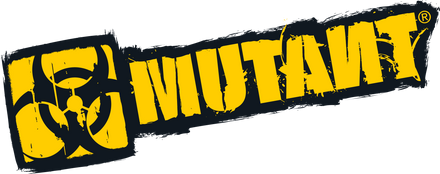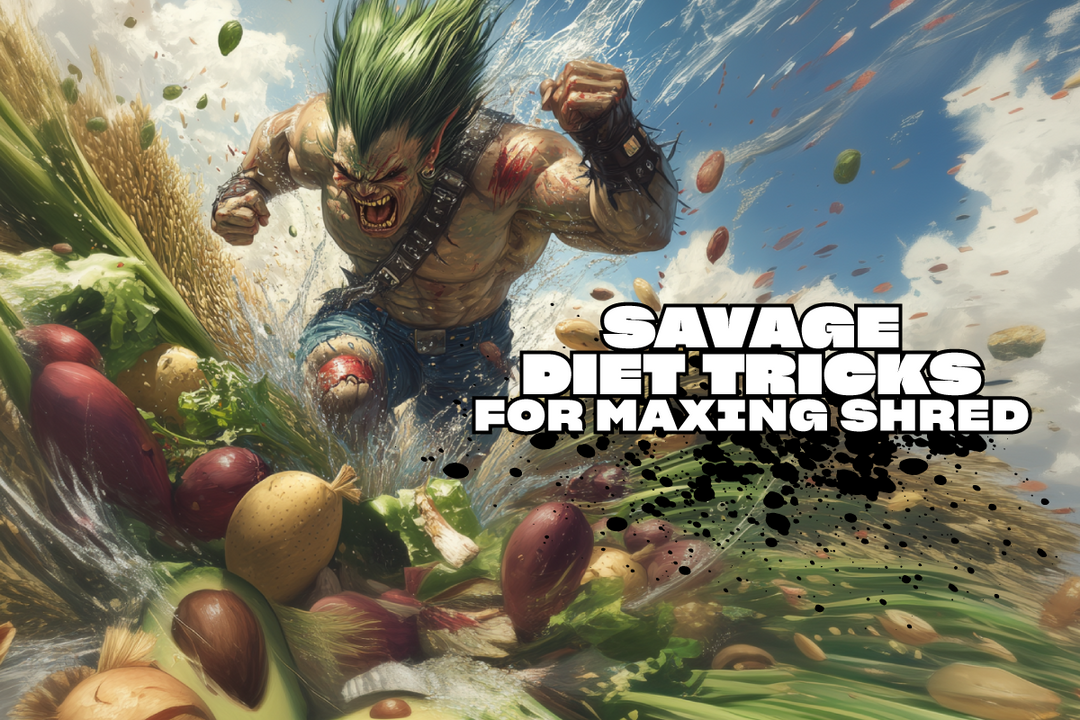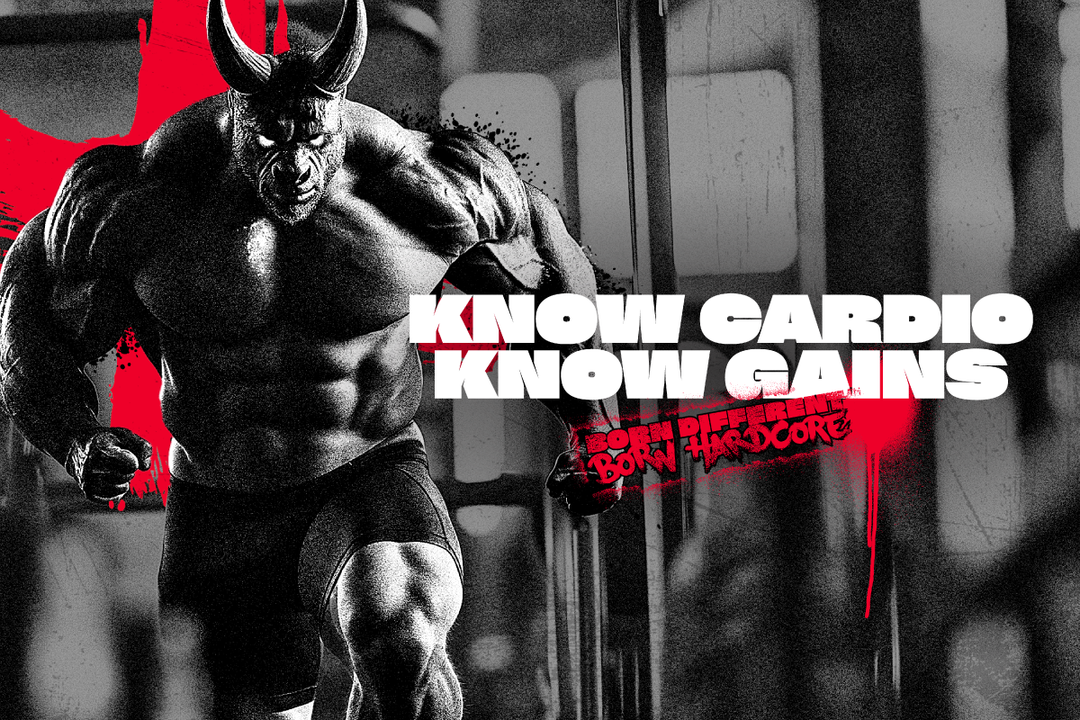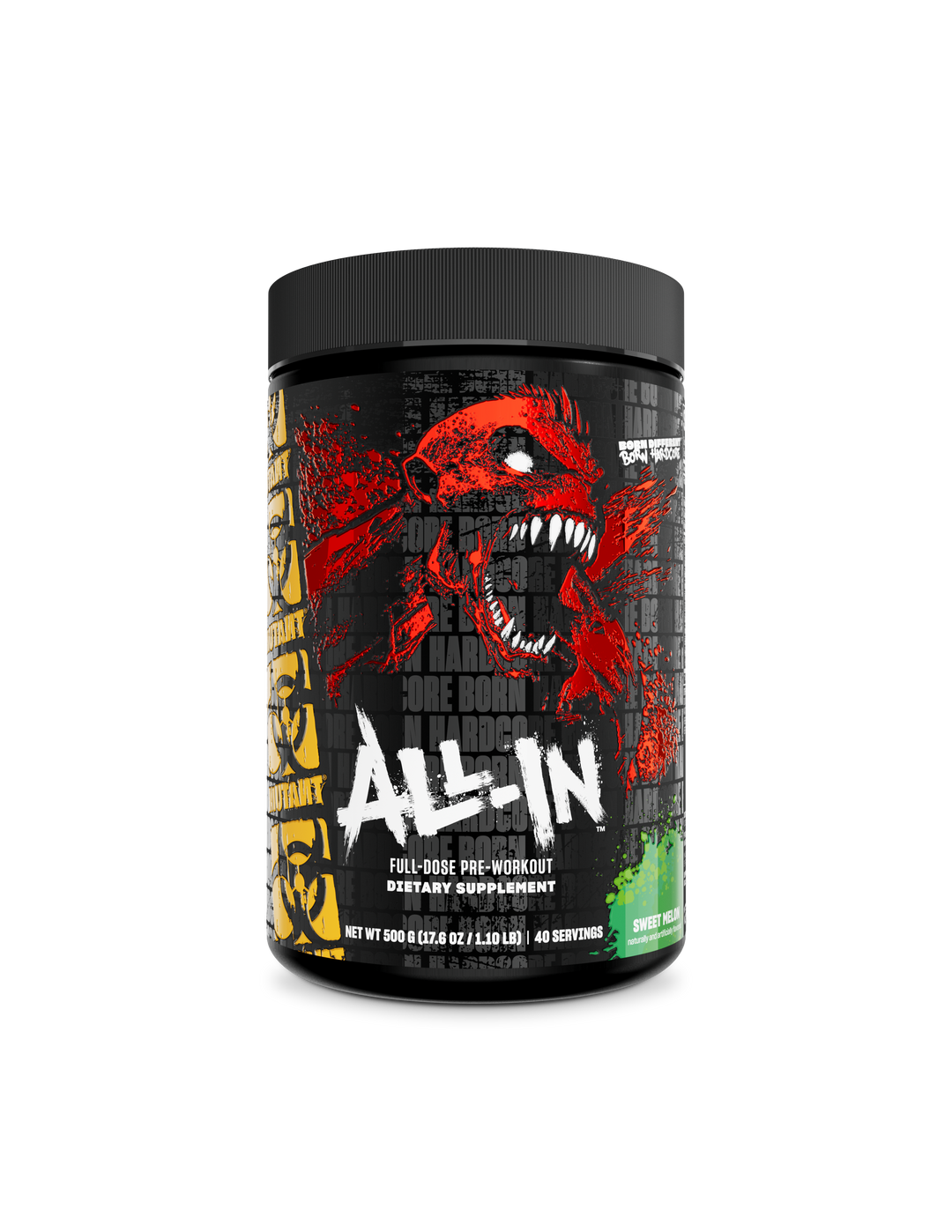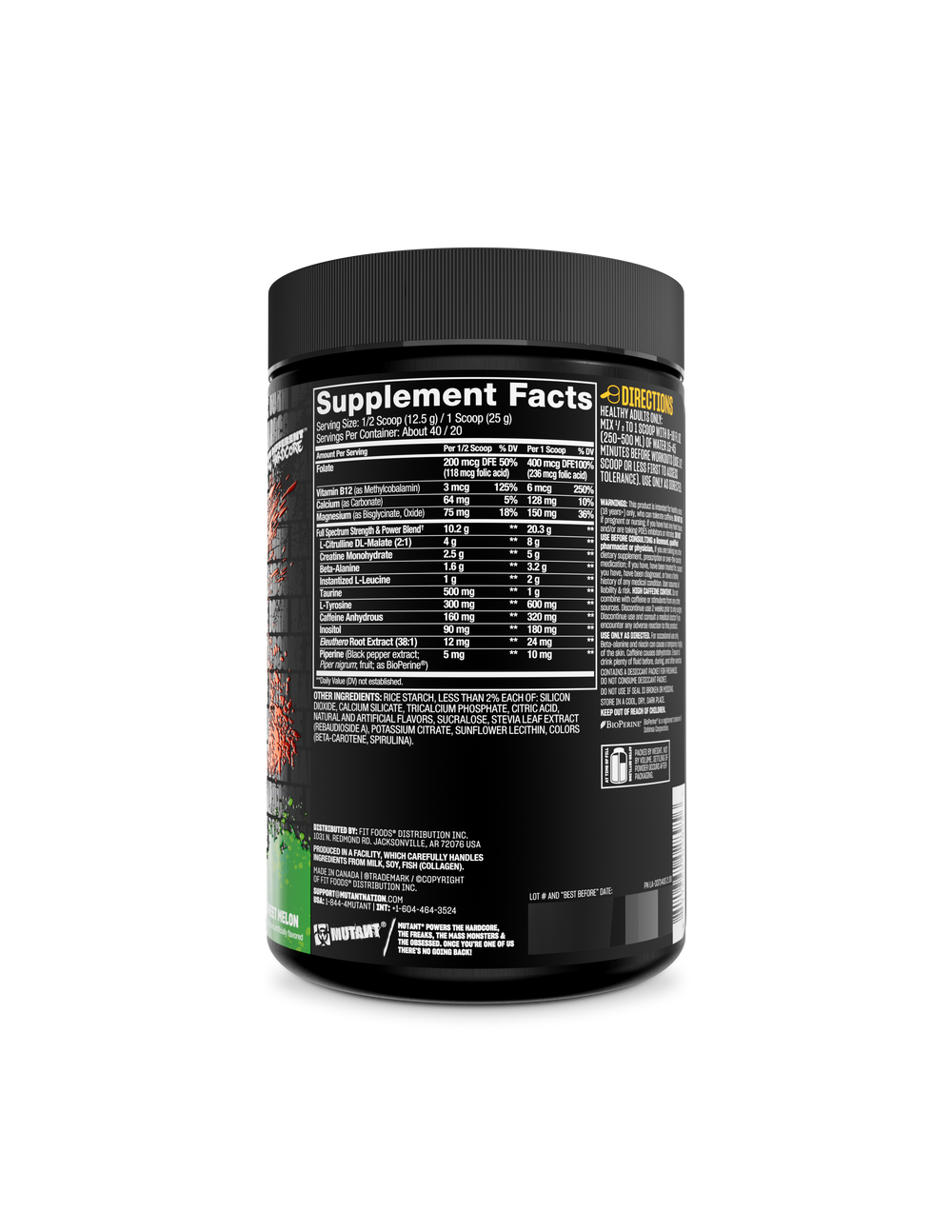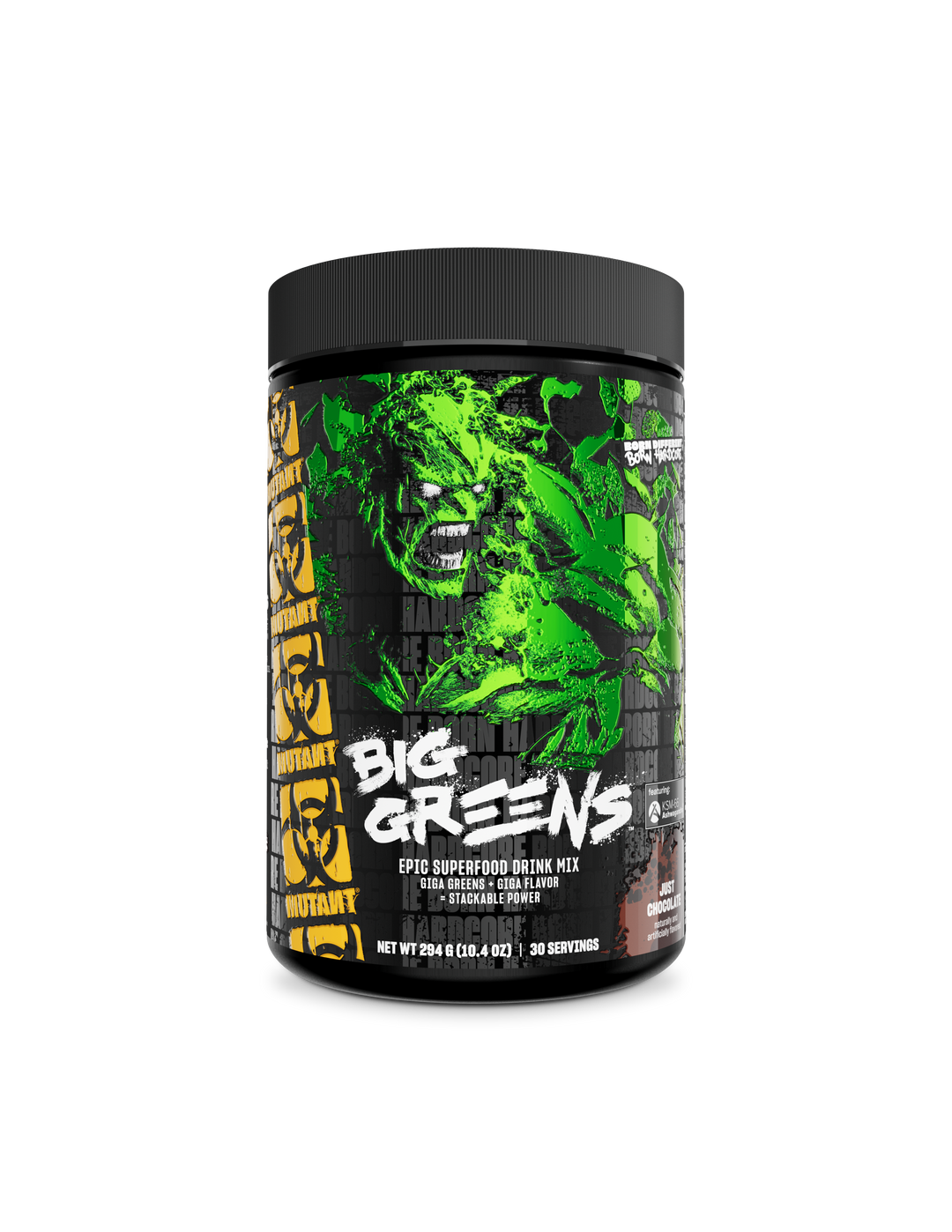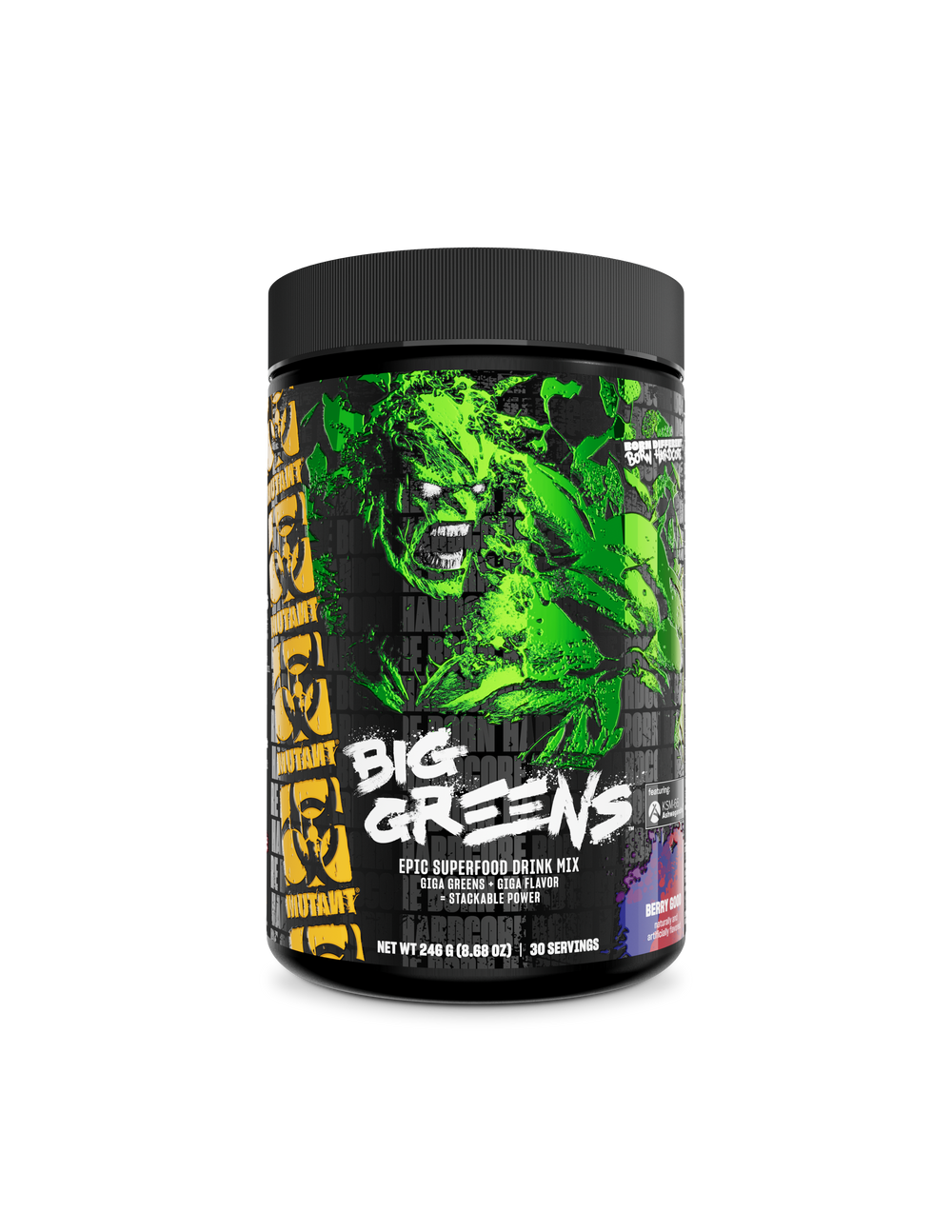Lift Big, Get Big: The 5 Strength Training Secrets for Massive Size
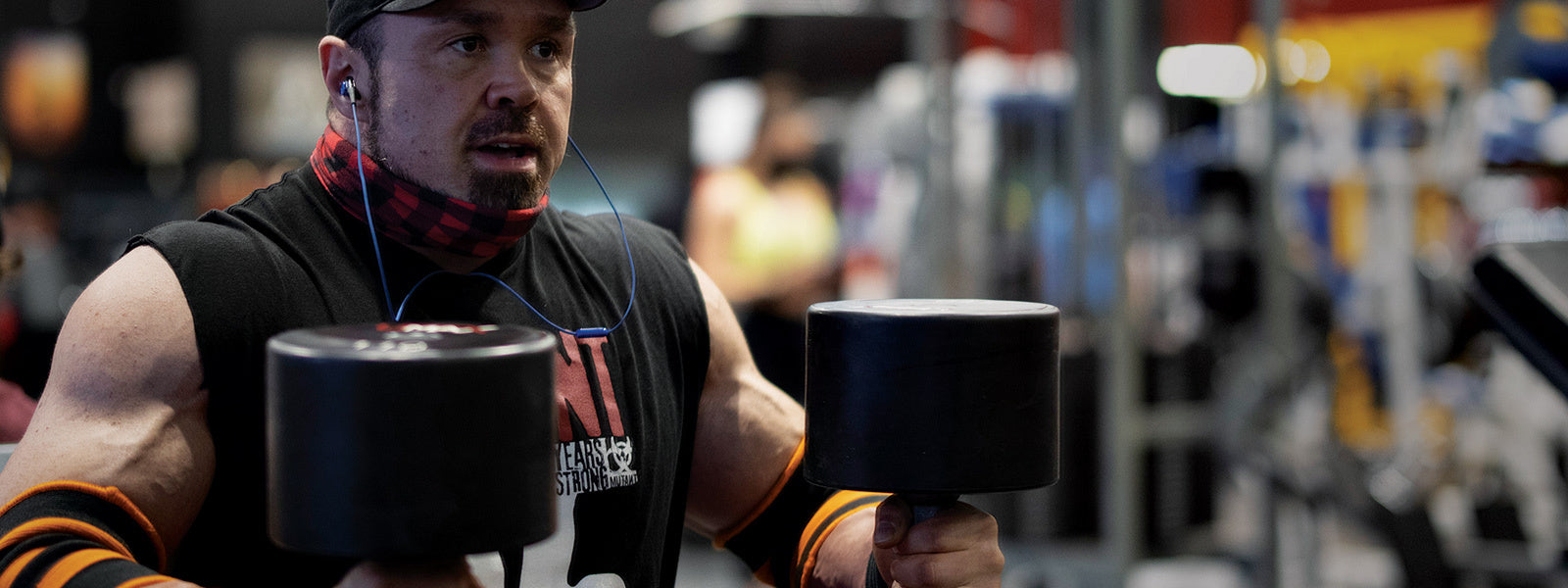
You’re doing rep after rep, set after set, meal prep’s on point, and you’re getting enough rest. Hell, maybe you’re actually stretching, too. You think you’ve been grinding like crazy for muscle, but you just aren’t seeing real results in your MUSCLE SIZE gains.
Bodybuilding is an art, science, and - despite a general hate for proper cardio - it’s also a marathon. Getting huge is a long-haul game, but breaking up your hypertrophy training with strength training can get you there FASTER. You’ll look better, too.
Training for size and strength are two sides of the same coin - or bumper plate! Olympic weightlifters, powerlifters, gymnasts, fighters - they’re not the biggest athletes by far, but they’re undoubtedly some of the strongest, and if they trained and ate like bodybuilders do, many of them could get HUGE.
Take Taylor Atwood, for example. He’s a 32-year-old lifter in Florida, and at the 2021 USA Powerlifting Raw Nationals, he benched 429lbs while weighing only 162lbs. No drugs, no equipment, just brute force.1
Maude Charron is another strength superstar, debuting in the 2020 Olympic Games in Tokyo. Competing in the 64kg class for women’s weightlifting, she took home the gold medal after a 105kg snatch and a 131kg clean and jerk. (That's 231lbs and 288lbs, respectively, while weighing around 141lbs.)2
It begs the question: How?!
Their power levels are definitely over 9000, but these outstanding individuals aren’t going Super Sayan. The answer is Vitamin S: strength training. REAL strength training. Add that to your chicken breasts and brown rice, and you’ll be breaking through walls (figuratively…) in no time.
So how does more strength equal more size? We’re glad you asked!
WHAT IS STRENGTH TRAINING, AND HOW WILL IT MAKE ME BIGGER?
Essentially, strength training means training to lift as much weight as possible relative to your body weight. More common, though, is hypertrophy training, which prioritizes high volume workouts (weight x reps x sets) to get bigger.
The two training styles actually complement each other. If you’ve already been lifting to get bigger, then you’re in luck, because you’ll have a rock-solid foundation of muscle ready to haul some serious weight.
By turning down the volume and increasing the strength behind your mass, you can get even BIGGER.

Fun fact: one square centimetre of muscle fibres can produce enough force to move roughly three to four kilograms of mass.3
Think of it this way: say you currently bench 225lbs for four sets of ten reps before tapping out. Weeks go by, you’ve plateaued, and you can’t add weight to the bar or your scale. You could increase the reps and sets, but you’d be at the gym for hours, and you risk overuse injuries. How do you get bigger, now?
That’s when you switch from hypertrophy to strength training for eight to twelve weeks. Your muscle fibres would get stronger, making the original 225lbs feel easy, and now you can lift heavier weights at high volumes to build bigger arms
Takeaway: Size and strength are swolemates. Bigger muscles increase your potential for maximal strength. Likewise, stronger muscles make it possible to increase training volume to get bigger.
OKAY, SO HOW DO I GET STRONGER!?
To know how you can get stronger you must first have at least a basic understanding of how muscles work. Sounds boring right? Easy tiger - skipping over this important first step puts you at risk for:
- Common workout injuries
- Bad lifting technique
- Training plateaus
- Poor recovery and illness
- Inconsistent workout routines
- Looking like an amateur
Don’t be that guy whose 1RM goes viral on meme accounts. Be smart and get educated so you can lift bigger! Don’t worry we’ll keep it short and sweet.
Note: If you’ve never done things like deadlifts or military presses (or any resistance training for that matter) then we recommend you save this article for a few months down the road when you’re a little more... conditioned to the iron.
Alright MUTANTS, LET’S GO!
HOW MUSCLES WORK 101
All physical movement starts in your melon - AKA your brain and central nervous system. You think “squat” and your brain sends signals down your spine and into your legs, telling those muscle groups to move. Your hips and knees go down, come up, and BOOM - you’ve done a squat.
In more detail, these signals are called motor neurons, which carry messages from your brain to your muscles. This message is called “acetylcholine” and when it gets to your muscles it starts a chemical reaction that leads to muscles contracting and lengthening - all within fractions of seconds!
Three things happen with this system when you train:
- The more you practice an exercise, the better your brain gets at sending those signals.
- More muscle groups involved in an exercise means more fibres get that message.
- The more weight you add, or the faster you move, the harder those fibres work.
That’s why “newbie gains” are a thing - this whole process starts adapting before the muscles actually get bigger. (It’s even easier to make gains when you’re younger because your brain and spinal cord haven’t started losing nerve cells, but you can still gain more strength at any age.)4
Alright, now you know the basics of how muscles actually move. Next, we’ll briefly break down what type of fuel your muscles use depending on your exercise intensity.
This is extremely important, because your intensity determines your results. And by fuel, we don’t mean carbs, proteins and fats.
HOW MUSCLES GENERATE LIFT STRENGTH
Every muscular contraction is fuelled by a molecule called ATP (adenosine triphosphate). There are three ways our muscles get ATP energy:
1. Creatine
Maximal effort muscular contractions, like full speed sprinting or super heavy squatting, will use creatine to produce ATP. However, within 10-20 seconds, creatine is depleted, ATP can’t be replenished and your muscles will need to rest. If you were sprinting, you’ll now start slowing down; if you were lifting weights, you’ll drop them. In order for this “energy pathway” to get going again, rest for at least 3-5 minutes.56
2. Glycogen
After creatine is depleted, your muscles will use stored glycogen (which comes from food) in order to keep doing reps. Glycogen will deplete within 45 seconds of muscular contractions, which is about 8 to 12 reps. For glycogen to be replenished, you’ll need at least 1-2 minutes of rest. This is your hypertrophy range - the ideal place for muscles to grow.
3. Oxygen
The last way to produce ATP is through oxygen. This energy system gets tapped into after 45 to 60 seconds of muscular effort, or about 15 reps. If you make it to this level of ATP production, you’re now doing endurance training.
IT’S TIME! THE 5 SECRETS TO LIFT BIGGER TO GET BIG!
Cool, so now we know how muscles work and we know the differences of strength vs size training. This will make it easier to understand why the following five tips are the best, scientifically proven ways to get as strong as possible:
ONE: KEEP YOUR REPS LOW AND YOUR REST LONGER
When you’re lifting heavy - we’re talking REALLY stacking plates - you won’t be able to do more than five or six reps (or about ten seconds of effort) before your creatine stores deplete and your muscles fail.
If you’re lifting tons of weight and you can still crank out a dozen reps, then add more weight. Simple as that. True maximal effort can only last about 10-20 seconds, as explained in the Creatine/ATP section above. Anything longer than that is no longer strength training, it’s hypertrophy or endurance training. This is probably the only time where it’s okay for you to finish quickly!
When your heavy set is over, you need at least 3-5 minutes of rest before this energy system is ready to lift again. If you try to do another set in less time than that, you’ll have to lower the weight, and lifting lighter means you’re not getting stronger or bigger.
Takeaway: The weight needs to be heavy enough that you can only lift it for five reps, and heavy enough that you need to rest for at least three minutes.
TWO: AIM FOR PROGRESSIVE OVERLOAD, EVERY WEEK

Progressive overload is a fancy kinesiologist’s way of saying “go harder you lazy bastard!” While it can be a gradual increase in weight, reps or sets, we are primarily concerned with upping weight incrementally with every workout. You need to be consistently trying to exert maximal force by pushing your muscles to failure within that 10-20 second timeframe.
Here’s a bunch of ways to progressively overload:
- Lower the reps and use more weight
- Reduce the weight on the bar and do speed reps
- Add more weight, but focus on the eccentric part of the lift (doing negatives)
- Pause for one second on the bottom of each rep
Strength-based calisthenics can increase the firing potential of muscle fibres, too, as long as they’re just as hard as weighted movements.
Some ideas for bodyweight exercises that build strength and size include: single leg squats, muscle-ups, weighted pullups and dips, jumping lunges, high box jumps, clapping pushups, handstand pushups, various weighted plyometrics, and kettlebell swings.
Takeaway: The exact exercise choice itself isn’t as important as the intensity you’re doing it with and how you continue to challenge yourself.
THREE: USE THE 7 MAJOR HUMAN MOVEMENT PATTERNS
Heavy lifts that replicate the seven natural human movement patterns will build full body strength and prevent muscle weak points. You’ll achieve a balanced physique, pull harder on every rep, and propel yourself towards your muscle size and definition goals.
When we say movement patterns, we’re not talking tutus and ballerinas. We’re talking about the ultimate movements underlying ALL human fitness activities. The patterns are: vertical and horizontal pushing, vertical and horizontal pulling, squatting, bending, lunging, gait, and rotation.
If your weekly workouts evenly hit all of those movements, then all your muscles are getting stronger and bigger together.
Many common strength programs revolve around the “big three lifts” (squat, bench, deadlift) but the problem is that those three lifts don’t hit every muscle group. You need more than that!
We’ve broken down the best exercises for each of those seven patterns based on how much more you can progressively overload with it:
1. Squatting
- Barbell back squats, front squats
- Weighted single leg squats, leg press machine
Pro tip: It’s a myth that your knees shouldn’t go past your toes (just look at Olympic lifters when they snatch or clean and jerk). Healthy ankle mobility allows you to squat deeper so you can build full lower body strength.
2. Pushing
- Horizontal: Flat bench press, weighted pushups, cable chest press
- Vertical: Military press, dumbbell overhead press, decline/handstand pushups
Pro tip: Know where and how you should grip the barbell. It should rest in the lower part of your palms with a neutral wrist to prevent strains. Ditch the suicide grip and keep your thumb wrapped all the way around the bar, as this engages your forearm muscles more and translates to more weight pushed.
3. Bending
- Deadlifts, sumo or conventional*
- Stiff leg deadlift, romanian deadlift
*Let’s get one thing out of the way first: the debate between conventional versus sumo deadlifts is likely wasted effort. The muscle group recruitment is extremely similar between the two, with a slight variation - sumo’s engage more of your quads, while conventional DL’s recruit more from your back and spinal erectors.
Do the variation that allows you to lift the most weight. If your sumo is better, then your back might be weak. If your conventional is better, then your quads might be weak.
Pro tip: Avoid mixing your grip until you’re testing out your max. One palm facing forward with the other one facing back may not seem like a big deal, but what you’re actually doing is internally rotating one shoulder while externally rotating the other. Repeatedly doing this is a recipe for injury or imbalance down the road. Use chalk instead.
4. Pulling
- Horizontal: Bent over barbell rows, t-bar rows, cable rows
- Vertical: Weighted pull ups, heavy lat pulldowns
Pro tip: Don’t shrug. Keep those lats pulled down and elbows tucked in for proper engagement.
5. Lunging
- Step-ups, reverse lunges, forward lunges, lateral lunges
Pro tip: Go deep enough to feel a stretch, and keep your feet hip-width apart. The above moves hit similar muscle groups as squats and deads, but you also work on symmetry, and the deeper ROM hits smaller muscles that support strength for those other lifts.
6. Gait
- Walking and running*
*The only way to strengthen this movement pattern is to full-on sprint for 20 seconds at a time. In this case, building speed is building strength, because the muscle fibres are still contracting as powerfully as possible. Competitive sprinters or football players aren’t necessarily powerlifters, but they can still squat tons of weight because the muscle fibres in their legs are used to high power output.
Pro tip: Maintain foot contact with the ground as little as possible, and visualize running forward as opposed to running up and down. This prevents joint stress.
7. Rotating
- Moving: Russian twists, cable chops, sideways medicine ball throws
- Static: Pallof press, dead bug, renegade rows
Pro tip #1: Don’t arch your back during core training; this lengthens abdominal muscles, and lengthening isn’t strengthening. Squeeze your glutes, hips and legs for support.
Takeaway: Our energy is limited, so save it for the exercises that use the most muscle groups at once. Don’t favour your favourite lifts - each movement needs equal TLC in order to prevent injuries and imbalances, and the exercises listed above all compliment each other.
FOUR: SLOWLY BUILD UP TO HEAVY SETS

You may have taken a scoop of a high dose pre workout and have awesome tunes blasting in your headphones, but rushing into heavy sets is a big mistake when you’re trying to build strength and size. You might “feel'' great, but your body has a built-in mechanism that will stop you from lifting max weights.
The reason you can’t jump into a heavy set is your tendons, the white tissues that connect muscles to bones. Inside your tendons are tiny sensory receptors (called “golgi tendon organs”) and if you move in a way that causes too much strain or tension, those receptors stop you before an injury occurs8. It’s why you fail on a lift when you add too much weight, or why you can’t stretch past a certain point without practice.
To avoid exciting these receptors in your tendons, which limit your lifting capacity, you need to gradually increase your workout intensity. It’s like muscle foreplay!
Warm up with full body movements to wake up your muscle fibres, and slowly add weight to the bar before you do your heaviest sets. You’ll be able to lift more weight, and you’ll avoid injuries. Remember how long it took Goku to get his power levels over 9000? Yeah, he wasn’t rushing.
Takeaway: Gradually increase your working sets to allow your muscles and tendons time to adjust; this lets you lift heavier. Heavier sets mean bigger muscles.
FIVE: TAKE STRENGTH SUPPLEMENTS THAT WORK
Everybody has different supplement requirements depending on their diet, genetics and fitness goals. We should all be taking essentials like multivitamins and protein powders, but if your goal is to lift big so you can get big, then you’ll need a few more. Here are your research-backed supplements for growth and strength:
Creatine
The highly studied lifting staple! Creatine, as we mentioned earlier, produces ATP energy, but we store limited quantities in our muscles. Taking creatine daily keeps your muscle supply topped up, allowing for ATP at the ready! You can buy creatine on its own, but global supply is decreasing; you can also find it in our strength-based preworkout, MADNESS ALL-IN.
ElevATP®
This is a patented blend of peat and apple extract shown to increase ATP energy, so hence the name. This blend isn’t sold on its own, but you can find preworkouts containing it instead. MADNESS ALL-IN, our new pre for strength gains, has a 150mg dose of this lesser-known ingredient.
EAA’s
Essential amino acids speed up recovery post-workout by synthesizing protein. EAA’s are also available as a source of energy in workouts, especially when carb intake is low. Leucine, isoleucine, and valine are the three branch-chain amino acids most responsible for muscle preservation, but you need all aminos to get bigger.
Glutamine
Glutamine, a non-essential amino acid, becomes vital during periods of high physical stress - like when you’re tossing crazy weights. Glutamine delivers nutrients to the cells that need it, increasing recovery. Taking glutamine daily for eight weeks has also been shown to boost explosive muscular power, moreso than lifters taking a placebo.9
Omega 3 Fatty Acids:
Specifically, EPA and DHA - these are types of fatty acids found in cold-water fish, flax seeds, algae oil and other nut oils. EPA improves joint mobility and boosts recovery by decreasing inflammation10, while DHA helps nerve signalling from your brain to your muscles.11
Citrulline Malate
This muscle-pumper is a bodybuilder’s BFF. This well-researched supplement is in a lot of preworkouts, but it’s often underdosed - you need six full grams to really get the blood flow benefits, which is how much we put in MADNESS ALL-IN. Increased blood flow delivers more nutrients and oxygen to your muscles so you can lift like a maniac.
Beta Alanine
We all know this infamously “tingly” ingredient! When taken at the right dose - about 3.2 grams - your muscles don’t fatigue so easily. Less burn, more weight!
Betaine
This naturally found chemical used in preworkouts can help make you bigger and more powerful. Several studies have proven the benefits of betaine, like boosting cycling sprint performance12, increasing anabolic hormones13, building more muscle, increasing workout capacity, and improving body composition.14
Huperzine A
This brain-boosting compound comes from the club moss plant. It’s a relatively new workout supplement, but the research is promising. Huperzine A has been shown to sustain elevated levels of acetylcholine, which we mentioned earlier is the chemical messenger between your brain and your muscles. This plant compound can also improve memory and overall brain health15, another reason why it’s in our latest preworkout.
Electrolytes
- Make your water work, because when muscles get dehydrated, they cramp and fatigue. For high quality hydration, look for electrolyte ingredients like Aquamin® (a highly bioavailable marine minerals complex with magnesium and seaweed calcium) and a salt complex, ideally Himalyan pink salt and magnesium oxide; these all provide satisfying hydration for muscles, bones and joints. MADNESS ALL-IN, as well as GEAAR, use these hydrators for those that want to lift and look as big as possible.
You can buy most of these supplements online or at your local supp shop, but to make things easier for the muscle-hungry lifters out there, we put ‘em all in our new preworkout MADNESS ALL-IN. We formulated this pre to help you lift big and get big - one scoop contains clinical doses of everything listed here, plus and a crash-free stimulant and focus blend. (It just doesn’t contain Omega 3’s or glutamine, though, which are recovery-focused.)
ARE YOU READY TO BE STRONGER AND LIFT BIGGER?
Here’s a quick recap on the five proven ways to lift heavier and get bigger:
- Less reps at maximal weights with longer rest times
- Progressive overload each week
- Train all seven movement patterns
- Slowly work up to heavier weights
- Take supplements that work
We should actually include just ONE more bonus step, because without it, none of those other five points matter.
You need to be ALL-IN, all the time. This isn’t just part of your lifestyle, it IS your lifestyle. Size and strength don’t come easy, so go out there and get lifting, and stop wasting time.
LIFT BIG, GET BIG.
References
- https://www.openpowerlifting.org/m/usapl/NS-2021-03-D
- https://olympic.ca/team-canada/maude-charron/
- https://www.sciencelearn.org.nz/resources/1916-muscle-performance
- https://medlineplus.gov/ency/article/004023.htm
- https://www.ptdirect.com/training-design/anatomy-and-physiology/the-atp-pc-system
- https://blog.nasm.org/uncategorized/determining-best-rest-periods-resistance-exercise-training-goals
- https://pubmed.ncbi.nlm.nih.gov/11932579/
- https://www.physio-pedia.com/Golgi_Tendon_Organ
- https://www.jhse.ua.es/article/view/2012-v7-n4-the-effects-of-glutamine-supplementation-on-performance-and-hormonal-responses-in-non-athlete-male-students-during-eight-week-resistance-training
- https://pubmed.ncbi.nlm.nih.gov/28717347/
- https://academic.oup.com/jn/article/137/4/855/4664682
- https://jissn.biomedcentral.com/articles/10.1186/1550-2783-9-12
- https://pubmed.ncbi.nlm.nih.gov/22976217/
- https://www.ncbi.nlm.nih.gov/pmc/articles/PMC3844502/
- https://supplementsinreview.com/pre-workout/huperzine-a-pre-workout/
DISLCAIMER: All ingredient, nutrient and/or product information provided herein, including but not limited to description, potential effects, and potential benefits, is for informational purposes only, and does not constitute as being, and should not be taken as, professional medical advice, as we are not Medical Doctors. Use of the information is at the sole risk of the reader. It is not intended to: substitute for and/or provide informed medical advice; act as diagnosis, treatment, cure, prevention, or care for any disease and/or condition. You should not: rely solely on this information, and/or; use this information to diagnose, treat, cure, prevent and/or care for any disease and/or health problems. Consult your family doctor and/or health care professional before using any supplements and/or before making any changes in prescribed and/or unprescribed medication.
